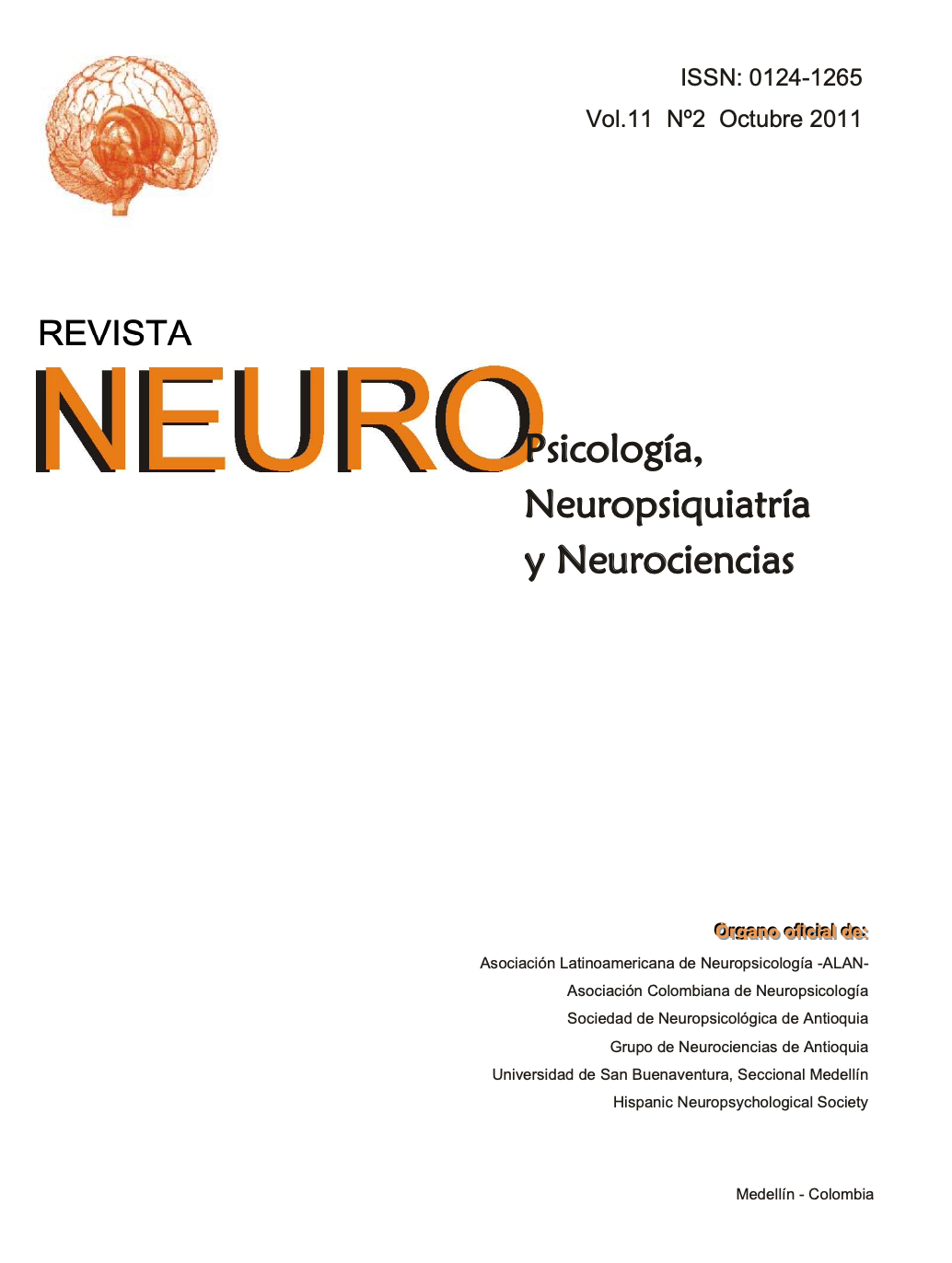A Magnetoencephalographic Study of Brain Dynamics Associated with Conflict in Selective Attention
Palabras clave:
Flanker task, visual selective attention, conflict evaluation, MEGResumen
The activity time-course of the principal cerebral areas involved in processing different levels of conflict was studied by magnetoencephalography (MEG). Participants carried out an Eriksen‟s flanker task having negligible conflict, some stimulus conflict and considerable response conflict in the congruent, neutral and incongruent trials, respectively. The intensities peaked at practically the same time under all three conditions assayed, suggesting that the brain was using the same circuits to evaluate the information in all three cases. The highest intensities were observed in the visual areas and thalamus during the first 200 ms, followed by the parietal cortex (which detected the conflict in our neutral trials) at around 272 ms, the anterior cingulated cortex (which detected any type of conflict) at around 331 ms and the prefrontal cortex at around 378 ms (activated in the incongruent trials around 100 ms before the mean of the response times). Our results agree with the hypothesis of a sequential “wiring” circuit controlling the conflict situations in this selective-attention process, where, after an initial filtering in the thalamic areas, the parietal cortex may be responsible for embodying a response, which could be modulated in the anterior cingulated cortex. Lastly, the prefrontal cortex might be recruited when necessary to select between competing responses, sending executive orders to the pre- supplementary and supplementary motor areas. The results also concur with the idea that a competitive bias begins in any part of the system, probably in the visual areas, and then spreads to “higher” and “lower” levels.
Descargas
Publicado
Número
Sección
Licencia

Esta obra está bajo una licencia internacional Creative Commons Atribución-NoComercial-CompartirIgual 4.0.
<a rel="license" href="http://creativecommons.org/licenses/by-nc-sa/4.0/"><img alt="Licencia Creative Commons" style="border-width:0" src="https://i.creativecommons.org/l/by-nc-sa/4.0/88x31.png" /></a><br />Esta obra está bajo una <a rel="license" href="http://creativecommons.org/licenses/by-nc-sa/4.0/">Licencia Creative Commons Atribución-NoComercial-CompartirIgual 4.0 Internacional</a>.








